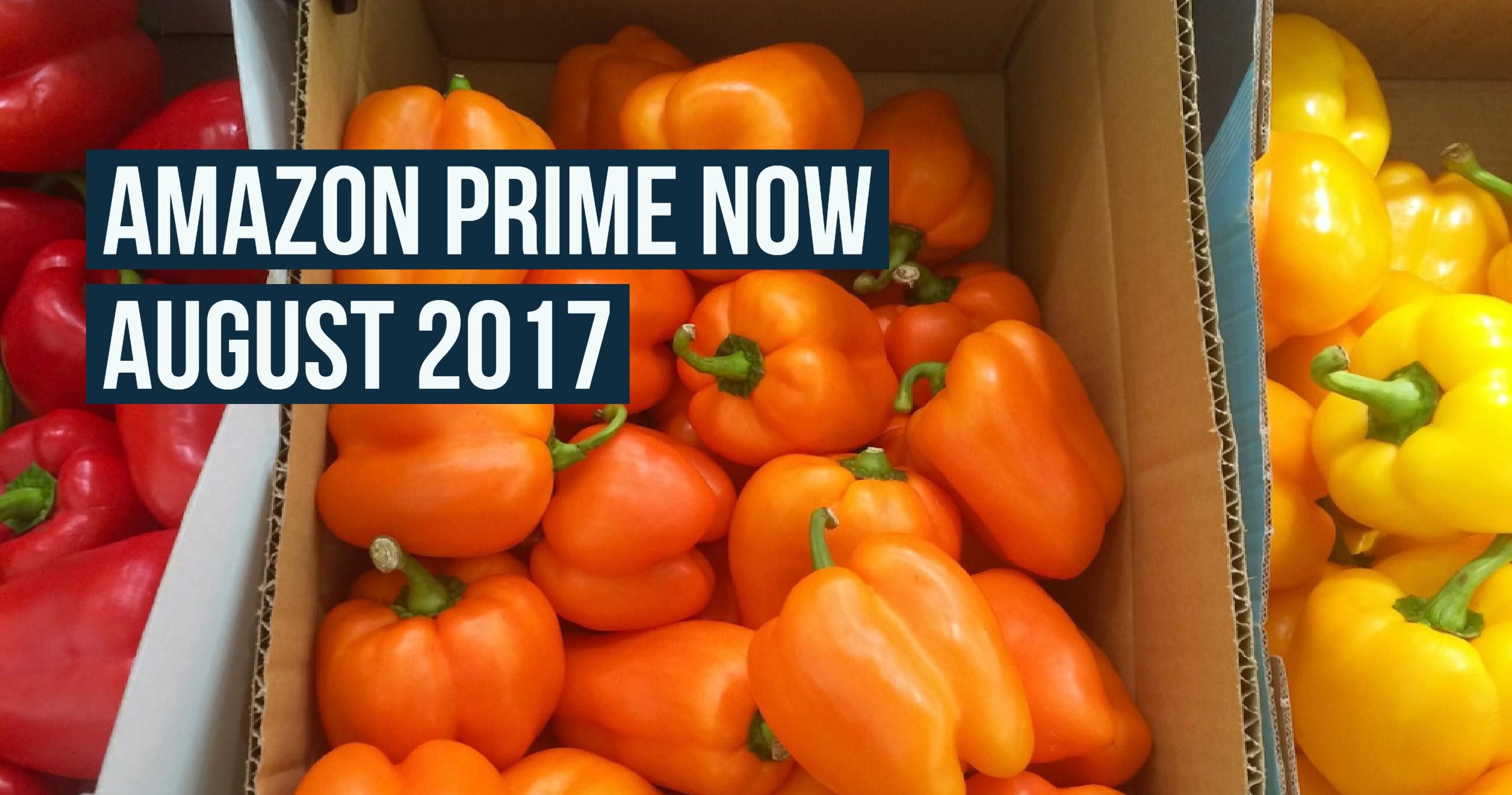Amazon Prime Now has a total of 918,675 products available in total across 32 cities in the U.S (as of August 28th, 2017).
Amazon Prime Now had 938,764 products in July 2017.
What is Amazon Prime Now
Amazon Prime Now’s tag line is “Skip the trip” and according to Amazon
Prime Now offers household items and essentials you need every day plus the best of Amazon, with FREE 2-hour delivery.
Top 10 Prime Now Categories

The Grocery category leads all others, accounting for 25% of the total products available for Prime Now. Just like the previous month, “Health, Household & Baby Care” and “Beauty & Personal Care” follow right behind. The Grocery category is expanding pretty quickly with the inclusion of alcoholic beverages such as beer, spirits, and wine to 12 cities.
Number of Products sold in each City
Seattle being the Amazon’s headquarters leads with the highest number of products on sale, totaling up to around 56k products, a bit lower than last month.
Sacramento comes second, beating Dallas (which had the second highest number of products last month).
The 15 cities with the highest number of products are shown below

The impact of Whole Foods on other large grocery chains
Since Amazon’s 13.7 billion acquisition of Whole Foods closed, the prices at Whole Foods have already dropped, with the eventual plan of lowering as many grocery items in-store. Whole Foods (WFM 42.0 0.0 0.0%) is more competitive with Amazon lowering Whole Foods prices by nearly 43% on the very first day.
Cutting prices could be a threat to Costco Wholesale Corp., Kroger Co., and Wal-Mart Inc as it’s possible that customers will notice lower prices and gradually purchase Whole Foods items on Amazon.com.
Local partners across cities
Amazon has slowly grown its retail partnerships in cities across the country. Sprouts Farmers Markets (SFM 147.8 -1.7 -1.2%), is the largest grocer to join with Amazon and is now expanding delivery through Prime Now to 20 cities. Shoppers loyal to Sprouts will find their way to the grocer’s e-commerce offerings, which could be a great impact on sales.
The chart below shows the local partners Amazon uses to service the various cities broken down by local partner stores by each city.

However, one-third of the products are still sold by Amazon compared to the local stores. Amazon does rely heavily on local stores but has not fully delegated the whole service to local partners.








